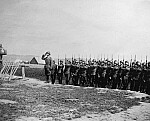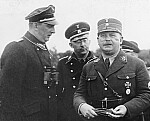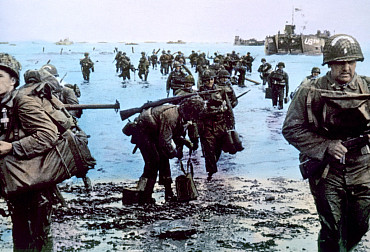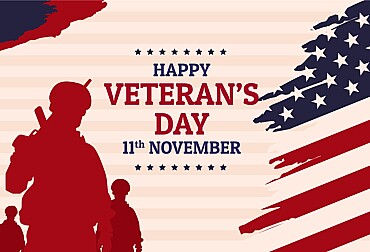February 19th 1945: The day when began Battle of Iwo Jima
The Battle of Iwo Jima was a pivotal conflict during World War II between the United States and the Empire of Japan. It took place over five weeks, from February 19 to March 26, 1945, on the small island of Iwo Jima in the Pacific Ocean. The battle is known for its strategic importance, fierce combat, and the iconic photograph of U.S. Marines raising the American flag on Mount Suribachi.
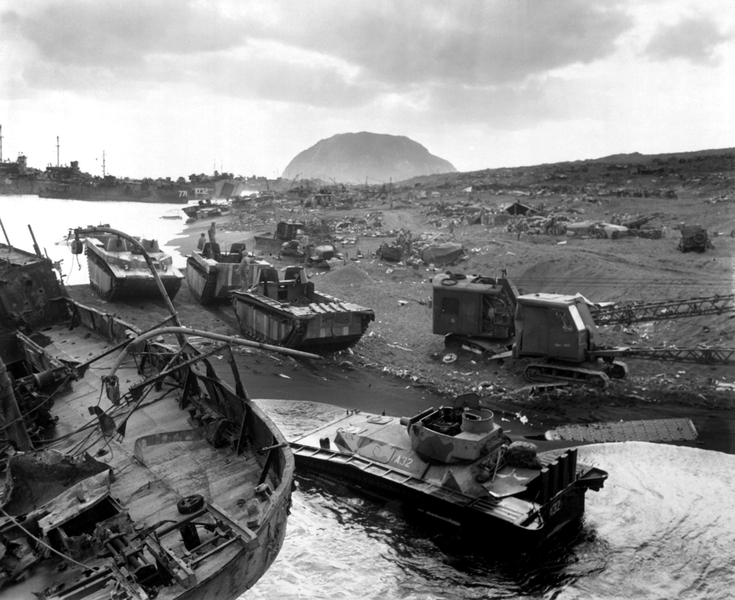
The first day of the Battle of Iwo Jima, February 19, 1945, was critical in setting the tone for what would become one of the bloodiest battles in the Pacific during World War II. Here are detailed insights into the events and conditions of that day:
Pre-Invasion bombardment
Before the actual landing, Iwo Jima had been subjected to a prolonged bombardment from the air and sea, intended to weaken Japanese defenses. This included bombing raids by B-24 Liberators and naval gunfire from U.S. battleships, cruisers, and destroyers. However, the effectiveness of this bombardment was limited due to the Japanese forces' extensive network of underground bunkers and tunnels that protected them from aerial and naval attacks.
Landing on the beaches
On the morning of February 19, U.S. Marines of the 4th and 5th Marine Divisions began their amphibious assault on Iwo Jima's beaches, particularly aiming for the southeastern coast near Mount Suribachi. The initial landings were less contested by Japanese forces than expected, as General Kuribayashi had ordered his men to hold fire during the initial stages to allow as many Marines as possible to land and create a larger target area.
Japanese defense strategy
The Japanese strategy, orchestrated by General Tadamichi Kuribayashi, was to wait until the beaches were crowded with Marines and equipment before opening fire. This tactic was a departure from previous battles where beach defenses were heavily manned. Instead, the Japanese used the island's volcanic terrain to their advantage, engaging in warfare from fortified positions inland, making the U.S. advance extremely difficult and costly.
The challenges of the terrain
The Marines faced immediate challenges due to the volcanic ash that covered the island, making movement difficult. The ash prevented the construction of secure foxholes and caused vehicles to become bogged down. This terrain favored the defenders, who had prepared their positions to maximize the difficulties it presented to the attackers.
The opening of Japanese defenses
Once the beaches were congested with troops and equipment, the Japanese unleashed a barrage of artillery, mortar, and small arms fire from well-concealed positions within the island. This sudden onslaught caused significant casualties among the U.S. forces and created chaos during the initial stages of the landing.
U.S. response and advances
Despite the heavy resistance, the Marines managed to establish beachheads and began to push inland, though progress was slow due to the formidable Japanese defenses. The first day's primary objective was to secure a foothold on the island and to begin the arduous task of advancing toward key strategic points, including Mount Suribachi.
Casualties and losses
The first day saw significant casualties on the American side, as the Marines struggled to contend with the unexpected terrain and well-entrenched Japanese forces. The exact numbers of casualties varied, but the intense resistance and difficult conditions made it clear that the battle for Iwo Jima would be a protracted and bloody conflict.
Significance of the first day
The first day of the Battle of Iwo Jima underscored the challenges that the U.S. forces would face in the coming weeks. The Japanese strategy of delayed engagement and the use of the island's natural defenses proved effective in inflicting heavy casualties and slowing the U.S. advance. This day set the stage for a battle characterized by fierce fighting, high casualties, and the demonstration of extraordinary valor by the U.S. Marines and Navy personnel involved.
Here are key points about the Battle of Iwo Jima:
-
Strategic Importance: Iwo Jima was considered strategically important because it was located halfway between the Japanese mainland and the American bomber bases in the Mariana Islands. The U.S. aimed to capture the island to use it as a base for fighter aircraft and as an emergency landing site for bombers.
-
Preparation and Forces: The Japanese, led by Lieutenant General Tadamichi Kuribayashi, fortified the island with a network of bunkers, hidden artillery positions, and over 11 miles of underground tunnels. The U.S. forces, primarily comprised of Marines, were under the command of Admiral Chester W. Nimitz, with Major General Holland Smith overseeing the invasion force.
-
The Invasion: The assault began on February 19, 1945, with naval bombardment and air strikes, followed by the landing of U.S. Marines on the beaches of Iwo Jima. The Japanese did not contest the landing beaches heavily, instead focusing on inflicting casualties from fortified positions inland.
-
Mount Suribachi: The capture of Mount Suribachi, a strategic point on the southern tip of the island, was a significant early goal. U.S. forces raised the American flag on the summit on February 23, an act captured in a famous photograph by Joe Rosenthal. The image became a powerful symbol of the battle and the broader war effort.
-
Fierce Combat: The battle was marked by intense and brutal combat. The Japanese fought almost to the last man, employing guerrilla tactics from their fortified positions. The U.S. forces faced harsh terrain, including volcanic ash that hindered movement, and had to systematically clear the island with flamethrowers, grenades, and close-quarters combat.
-
Casualties: The battle was one of the bloodiest in the Pacific theater, with high casualties on both sides. The U.S. suffered over 26,000 casualties, with nearly 7,000 killed in action. Of the approximately 21,000 Japanese defenders, only about 1,000 were captured; the rest were killed in the fighting.
-
Aftermath and Legacy: The capture of Iwo Jima allowed the U.S. to control the island's airfields, which were used in the air campaign against the Japanese mainland, including the bombing of Tokyo. The battle demonstrated the determination and valor of the U.S. Marines and is remembered as a testament to the ferocity of the Pacific War.
-
Cultural Impact: The image of the flag raising on Mount Suribachi became an enduring symbol of American courage and resolve. It was used to promote war bonds and has been memorialized in various forms, including the Marine Corps War Memorial in Arlington, Virginia.
The Battle of Iwo Jima remains one of the most significant and storied battles of World War II, symbolizing the extreme conditions and fierce determination characteristic of the Pacific theater.



